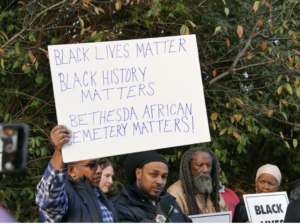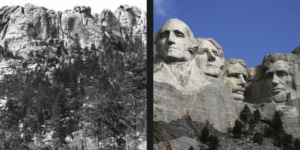 MARSHA COLEMAN-ADEBAYO, nofearcoalition at aol.com, @BethAfrCemetery
MARSHA COLEMAN-ADEBAYO, nofearcoalition at aol.com, @BethAfrCemetery
Coleman-Adebayo is the president of the Bethesda African Cemetery Coalition, which is organizing the largest of a series of protests on Friday at noon to “honor the dead at Moses Cemetery” in Bethesda, Maryland, just outside of D.C. (Moses Cemetery 5204 River Road Bethesda, Maryland.)
Last year, the Washington Post published her piece:”I was Arrested for Defending a Cemetery in Montgomery County.” On Wednesday, she was interviewed for a major segment on “The Kojo Nnamdi” Show on WAMU, the main NPR station in D.C. Also see recent piece in National Geographic: “The Fight to Save America’s Historic Black Cemeteries,” which quotes her.
Coleman-Adebayo said today that the “Black burial site at Moses Cemetery, a historic 18th century site, is being destroyed” to put up self-storage units. “Hundreds of trucks have removed massive amounts of dirt and potential remains, funerary items, and graves. Bethesda African Cemetery Coalition has been protesting desecration of this site since 2017.
“Recent developments have influenced the protest. … Observers have photographed a gravestone being dug up and ignored by the archeologist hired” by the builders.
The group states that letters and protests directed at various political figures such as County Executive Marc Elrich and State’s Attorney John McCarthy have produced no meaningful results.
Coleman-Adebayo is also a former senior policy analyst with the Environmental Protection Agency.




